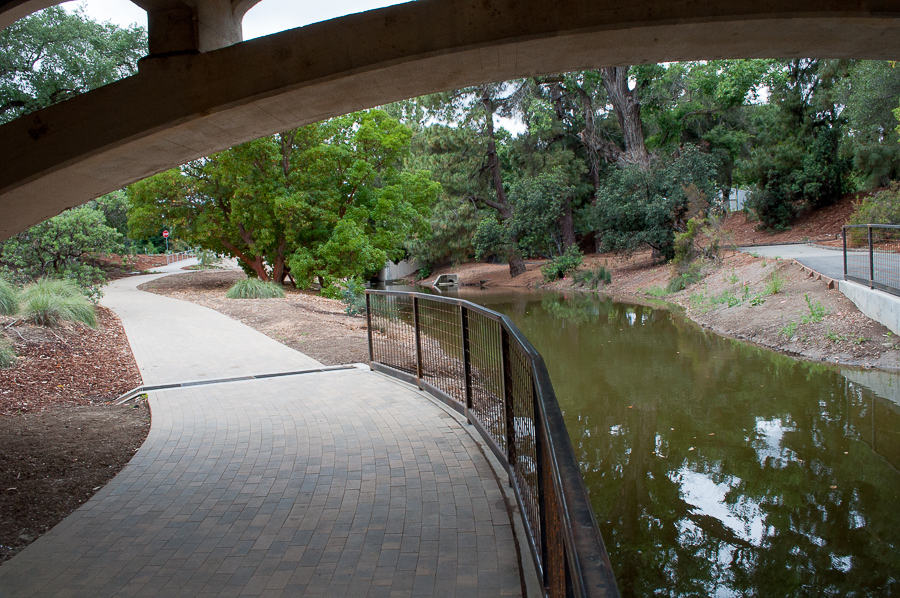
Floating island added to Davis arboretum by interns to act as small wetland, promote better water quality
Internships are a major part of many college students’ lives. At UC Davis, interns are fortunate enough to help improve their very own campus through the Learning by Leading Program at the Arboretum and Public Garden. These Waterway Steward interns tackled a project to better the Arboretum ecosystem by providing a site that stops the growth of excess algae and a place for the California freshwater turtle while cleaning the water for fish residing there. Every part of this creation is native to California, further adding to the benefits of implementing this island.
“The Waterway Stewardship interns and I applied for a $2,000 The Green Initiative Fund grant in November of 2017,” said Nina Suzuki, the leader of Waterway Steward. “We were awarded the grant in December and started designing the project in January. Students did research on other floating islands and floating treatment wetlands, created their own designs, collaborated with each other to refine their designs, presented their ideas to Arboretum staff and incorporated feedback and ultimately created their final design to meet their goals and the project budget. We ordered materials and assembled the island during Spring Quarter. The island was installed on April 11.”
This small representation of a wetland has been worked on by these students for over a year now, and the current state exhibits promising results for the future of the Arboretum. Not only did this island complete the first phase (of four) of the Arboretum Maintenance and Enhancement Project, it was also a learning experience for everyone who took part in it. And as with any learning process, difficulties were encountered along the way (although the team encountered few problems overall).
“While building the island was successful, the project was not without a few obstacles,” said Kendal Hicks, the Waterway co-coordinator. “One problem that we ran into was assessing how to clearly show where each plant goes on the island. We managed to use chalk to mark areas for the plants without creating permanent lines on the mat. This allowed everyone to understand the overall design of the island. Even now, we are currently figuring out how to keep the ducks from eating our plants as they begin to grow. Once the plants are more developed, the ducks will not be as much of an issue.”
Perseverance was a key component to get the results they wanted, and all those involved were content with the finished waterway. The team had many options when it came to what to focus on but they were all united in wanting to bring about positive change for the arboretum.
“Since our internship revolves around the Arboretum waterway, we wanted to focus on
something that would directly involve the water,” Hicks said. “We have all had heard about floating wetlands, and decided this would be an interesting and valuable learning experience for the internship. I am so happy that we accomplished this project, and I am excited to see future changes for the waterway.”
The interns will not stop here though — there is a bright future for the arboretum, thanks to the students and their passion for promoting sustainability. The interns hope to bring awareness to water quality as they continue to offer more projects for the lowest spot (in terms of elevation) on campus since this is where rain run-off and recycled water first hit. The students involved are heavily tied to this area and want everyone who enjoys this beautiful spot to feel the same about the significance of keeping it clean and preventing algae bloom.
“The floating island was great student project opportunity that Kendal and I were extremely interested in undertaking,” said Tiffani To, a third-year environmental science and management major. “Being interns for the waterway, the floating island has the potential to improve water quality and absorb excess nutrients in the water to prevent algae growth. The project was also a great way to get the public more aware about the changes happening with the waterway and the importance of water quality.”
Written by: Lauren Tropio — city@theaggie.org




